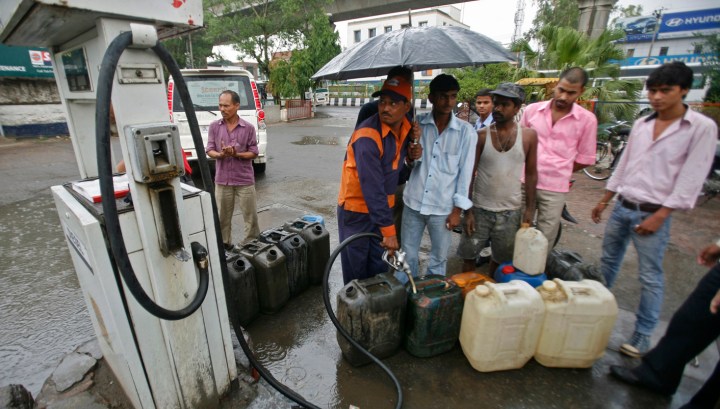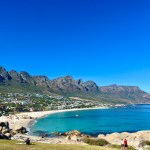Newsdeck
India: The struggle with pipeline geopolitics

Writ large across the map of the proposed gas pipeline through Turkmenistan, Afghanistan, Pakistan and India pipeline is India’s folly in trusting energy security to a route crossing such hostile territory. But Delhi is finding it hard to resist the potential diplomatic gains of being involved in the megaproject, as well as a grandiose rhetoric that reflects America's ambitions to thwart Russia and block Iranian gas. By Zorawar Daulet Singh
India spends more than U$400 million each day on oil imports. This accounts for 70% of its oil consumption and yet, for a country facing such high dependence on outside sources so early in its growth trajectory, one would expect the development and foreign policy agenda to prioritise reliable and long-term oil supplies.
And yet, Delhi seems to be expending diplomatic and political resources in a direction that would baffle even the most optimistic observer. Last week, the union cabinet affirmed India’s participation in the 1,700-km Turkmenistan-Afghanistan-Pakistan-India (TAPI) pipeline, which envisages a flow of gas from Central Asia into the Indian heartland.
While Afghanistan and Pakistan committed to the security of the pipeline in a December 2010 Inter-Governmental Agreement, the transit zone involved in the TAPI case is now widely acknowledged as the most tumultuous region in the world.
In Afghanistan, though the Kabul regime has received extensive international aid and military support, it is by no means assured that the state will acquire the wherewithal to ensure the uninterrupted flow of a strategic resource like natural gas across 735km of southern and western Afghanistan, the hotbed of Pashtun resistance.
In Pakistan, the problem is magnified because the state’s capacity is weak and compromised by an ideology that is repulsed by the idea of any interdependence with India. Further, the military – the most vital state organ for underwriting the security of the 800-km transit route – is nurtured by a strategic culture that strives to acquire new leverages vis-a-vis India. To place India’s energy security in the hands of an institution that has rarely been bound by international agreements would be strategically irresponsible.
So why is this project being pursued? Perhaps it serves to underscore India’s hope for a seamless flow of resources across the greater South Asia region. It might also be good public diplomacy as India exudes the right notes for a region condemned to irresolvable territorial conflicts.
Indeed, the US State Department spokesperson summed up US interest in this project: “You’ve got new transit routes, you’ve got people-to-people links, you’ve got increased trade across a region that historically has not been well-linked, where there have been historic antipathies which are now being broken down by this positive investment project.”
Few can dismiss such grandiose rhetoric. But to assert that the TAPI pipeline “is a perfect example of energy diversification”, as the US official did, is going too far. What it actually reflects is America’s dual strategy to break the Russian monopsony on Central Asian gas and prevent the flow of Iranian gas eastward. Concern for South Asian energy security was probably an afterthought.
The pursuit of energy security is a serious endeavour and cannot be driven by, or become hostage to, ideological or optimistic projections of international politics. Surely there are other, more benign means to test the prospects of Central-South Asian camaraderie? A two-way flow of less strategic merchandise and people could be a start.
If energy security is a national concern, Delhi should be pursuing a geo-strategy that is based on a more sensible comparative assessment of the potential lines of communication to the energy starved Indian heartland.
The severing of India’s natural lines of communication to the resource wealth of Central and West Asia was one of the great tragedies of partition. In many ways, India’s post-1947 foreign policy has struggled to overcome the geopolitical consequences of 1947, after which India became a prisoner of geography unable to forge continental geo-economic or geopolitical links with its western periphery and beyond.
Fortunately, peninsular India has historically always provided options to craft maritime lines of communication between India and the world. Indeed, over 90% of India’s trade and all of its oil imports rely on maritime transportation networks. Therefore it is only logical for India to explore maritime energy routes.
In 2009, Gas Authority of India (GAIL) entered into a Principles of Cooperation agreement with South Asia Gas Enterprises (SAGE) to explore the technical viability of laying a deep-sea pipeline from West Asia across the Arabian Sea to India. According to SAGE, the cost of a pipeline from Oman to India, a project first studied in 1995, would be $4 billion (TAPI is estimated at $8-10 billion).
The gas tariff would also be lower, since transit or security costs become negligible. Oman’s access to the Arabian Sea makes it a natural export hub for gas-rich states like Qatar, Turkmenistan and Iran. A direct coastal pipeline from Iran to India is not only technically challenging, given the depth and turbulence of the Indus Canyon, but would also require Pakistan’s acquiescence since it would traverse near the latter’s exclusive economic zone.
In March 2011, the union petroleum minister stated in the Rajya Sabha (Parliament’s upper house), “So far, technical feasibility of the [Oman-India] project has not been established” and “not much progress has been made since” mid-2009. Has India’s inability to de-hyphenate its Tehran ties from its US policy reduced the attractiveness of this project?
Russia’s strategy of systematically investing in routes that bypass politically volatile or unfriendly transit states can serve as a lesson for India. In 2005, Moscow and Berlin came together to collaborate on a project that sought to overcome the financial and geopolitical costs of transiting large volumes of natural gas through Central and Eastern Europe.
Until recently, 70% of Russian gas was transiting through Ukraine and Poland. The 1,200-km Nord Stream sub-sea pipeline network, which became operational in 2011, has connected Eurasia’s largest energy supplier directly to the economic heart of Europe through the Baltic Sea.
India’s proximity to energy-rich West Asia is a geopolitical advantage that most nations can only dream of. Lines of communication, however, do not just arise spontaneously but are always the outcome of sustained political, economic and even military commitment to specific routes that are deemed stable and relatively inexpensive to sustain. This is the essence of geo-strategy.
Moreover, advancement in offshore technologies and high hydrocarbon prices has made deep water pipelines a viable proposition. Finally, the growing capabilities of the Indian navy will only complement a political initiative to pursue a sub-sea link between West Asia and India’s west coast.
It would be absurd if the public diplomacy that is apparently guiding Delhi’s calculus on TAPI deflects attention from the more urgent need for a secure maritime energy line of communication to India’s economy. A subsea pipeline deserves more than a perfunctory assessment. DM
Credit: This edited article is used courtesy of Asia Times Online (http://www.atimes.com/), who retain copyright.
Photo: A worker fills diesel in containers at a fuel station during a rain shower at Noida in the northern Indian state of Uttar Pradesh May 21, 2011. REUTERS/Parivartan Sharma




















 Become an Insider
Become an Insider